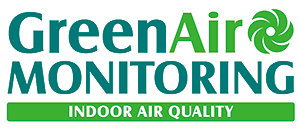GreenAir:OnAir - Episode 2 - Are you wasting money measuring things that won’t be there?
We generally refer to general and specialised workplaces. General workplaces are offices or other innocuous buildings where it is unlikely specific risks are posed to workers whereas specialised workplaces from an indoor environment point of view pose specific risks, for example dust and other respirable particles, VOCs and other dangerous chemicals and fumes.
Knowing why you are measuring for certain pollutants helps to ensure your specification is both relevant and cost effective and that issues affecting the productivity, comfort and safety of your staff will be identified.
Most people, in the average office, don’t need to worry about:
- Ozone. High ozone levels can affect lungs and exacerbate respiratory conditions. It used to be a greater problem as it was produced by photocopiers and laser printers (remember that electrical smell from early photocopiers?). Much of this has now been engineered out by manufacturers in new designs and using ozone filtration systems. Regular maintenance of this equipment and its location in well ventilated areas is essential to reducing ozone levels.
Background ozone levels will exist on the street and so will enter the workplace via windows and ventilation systems. Figures for ozone levels recorded by external weather monitoring stations are freely available and are published by various authorities.
- Formaldehyde. Formaldehyde is a colourless gas with a pungent smell; it can cause irritation to eyes, throat and lungs. Levels are usually high during the early occupation of a new or refurbished building as it arises from glues and varnishes ‘off-gassing’ from new furniture, carpets and other building materials.
Once a building is six months old there are usually only trace amounts along with other VOCs and after a few years, routinely measuring these may be an unnecessary cost.
We would recommend measuring at the outset and monitor over time, assessing the real need for frequency of continual monitoring based on the ensuing trends culminating at a point where you could save both money and time.
- Oxides of sulphide and oxides of nitrogen were likely to have been originally measured when buildings used very large oil fired boilers for heating and hot water. In many cases the buildings have long gone either demolished or the boiler equipment replaced with gas fired systems with greater fuel efficiency and fewer pollutants, but in many places a regime still exists to measure these, likely now unnecessarily.
